I had seen the title on CIM's website and was intrigued, but thanks to a violin lesson it didn't seem that I'd be able to attend. Late in the afternoon, my instructor called to reschedule--something I didn't mind since being fresh off a week in Columbus I wasn't feeling particularly well prepared for the lesson.
Arriving at CIM I wasn't entirely sure what to expect; Annie Fullard, a member of the Cavani String Quartet and program director for
Art of Engagement promised the small audience assembled in Mixon hall a "Rocking Good Time", and that it was. Throughout the program, donning a backwards baseball cap and a "We (heart) Peter Salaff" T-shirt. To give you an idea of the temperament: A video of the
Concerto For Faces kicked things off.
Through CIM's
Art of Engagement seminar, students develop an educational program presented to young audiences to both hone the CIM student's public speaking and audience engagement skills as well as provide a beneficial and educational experience for young audiences.
I know I've said it before but as student of California public schools, where it seemed arts were a convenient line to sacrifice when budgets didn't quite work--and a latecomer to classical music--who has occasionally wondered how things would have been different if I had been exposed more deeply at an earlier age* and it's one of the reasons I'm passionate about hearing it now...and encouraging others to hear it.
Likewise, the timing of this presentation couldn't be more opportune on the heals of The Cleveland Orchestra's recent announcement about the founding of the
Center for Future Audiences with a $20-million grant from the Maltz Family Foundation (
As an aside, albeit a boldfaced one: I can't write a big check, but if any of the organizations I've written about can use me in any way to help with audience development...drop me a line. I'd love to get involved.).
Taking things slightly out of order, I was quite interested to hear Cleveland orchestra Director of Educational and Community Programs Joan Katz discuss things from the perspective of the orchestra, including fleeting statistics on ticket prices and the success of the
Fridays@7 and Musically Speaking series, both of which I've been quite impressed by, as well as some of the challenges faced by the orchestra. Though I'm sure it may not have appealed to everyone, this context nearly made the event worth attending on its own.
Between the concerto and Ms. Katz's presentation the members of the Cavani String Quartet (Mari Sato, Kirsten Docter, Merry Peckham, Annie Fullard) along with legendary violinist and CIM's Director of Chamber Music Peter Salaff, and Director of Performance and Outreach, Ms. Chris Haff Paluck introduced themselves and had shared some profound thoughts on what it means to engage an audience -- so free flowing that I couldn't write them down quickly enough to scribble down an accurate quote.
Ms. Peckham--after initially declaring that she couldn't say it more eloquently than her colleagues--particularly resonated with me**: That the experience is that much more extraordinary when playing for people who aren't expecting the magic of music. Mr. Saloff followed that with a touching story about playing for his grandfather and the observation that music is joy, magic, and touches the heart.
It seems an unwritten and nearly universal rule that classical musicians must have a stuffy reverence when performing so it was great to see the members of the Cavani quartet letting their literal hair down: Ms. Fullard came onto the stage flashing a peace sign and, after none of the audience members volunteered a blond joke, quipped that fellow quartet member Mari Sato had one: The rest of her quartet.
After the introductions came four performances by students in the seminar, representing the hard work that they're taking into classrooms around the region.
Bassooner Than Later from
Bassoon 4 (Julie Ann Link, Laura McIntyre, Susanna Whitney,
bassoons; Kian Andersen, contra-bassoon) a program intended for the Pre Kindergarten-Kindergarten age range, I'm not sure how the members of the quartet were able to muster the level of energy required for their age-appropriate program at 8pm on a Friday night. Though the difference between me and the target group is of drinking age (boy, do I feel old), I learned that the bassoons are the lowest member of the woodwinds family. Beyond that, a series of variations on "Polly put the kettle on" demonstrated the different feelings the same music can evoke.
V.E.R.A. from the
Vera String Quartet (Michelle Abraham, Anne-Sophie Lacharite Roberge,
violins; Caitlin Lynch,
viola; Katie Tertell,
cello) took us on a tour of the string family intended for grades 3 and 4. The ascending scale, starting deep in the cello rising through the viola, and carrying through to the edge of the fingerboard on the 2nd violin was a great demonstration of the family's range, as was the demonstration of how simply altering a note can dramatically change the mood of the music.
Also included was a concise introduction of each player's role in the music (Harmony, Rhythm, Viola...yeah, I'm a little foggy about that one, too) and the need for teamwork by way of example of individual precision but intentionally spectacularly bad ensemble playing. Bonus points for the well-timed and on point Miami Heat "great individual players who can't play like a team" dig.
A Night at the Movies from
The Kyodai Brass (Conrad Jones, Hayto Tanaka,
trumpets; someone not Valerie Sly
, horn; Gary Jones,
trombone; Douglas Jones,
tuba) opened their program intended for grades 6-12 with an arrangement of John Williams's best known pieces: Here again, entertainment meets education... did you know that the horn gets its shape from the original 1600s use as a hunting horn: If you saw something that the hunting party behind you might be interested in you would play over your shoulder.
I'm sure I'm leaving out quite a bit... my program is so covered by the sometimes overlapping scribbles I made in the heat of the moment... all I can say if you weren't there is you missed a rocking good--informative and entertaining--time, and it seems the audiences of tomorrow are in good hands.
Lincoln

*- It's not your fault, mom. But I won't rule out trying to leverage it.
**-I'm trying to make out the hieroglyphs that constitute my handwriting in the program's margins; if I've horribly misconstrued the comment, I'd be glad to correct it.
 Gershwin: Preludes (Trans. Aronld)*
Gershwin: Preludes (Trans. Aronld)*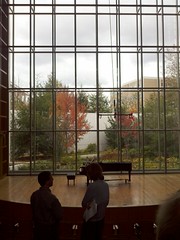



 When I got my new phone from work a couple weeks ago, one of the first things I did was test the speaker phone to see if it would be usable. I called my boss from my living room. "How does it sound?" I asked "Like you have me on speakerphone in an under-furnished townhouse" was his answer.
When I got my new phone from work a couple weeks ago, one of the first things I did was test the speaker phone to see if it would be usable. I called my boss from my living room. "How does it sound?" I asked "Like you have me on speakerphone in an under-furnished townhouse" was his answer.



 Ok, I promise I'm not going to make a habit out of this but what can I say, I'm a sucker for water, fall colors, reflections, and geese and this is a time for all of them.
Ok, I promise I'm not going to make a habit out of this but what can I say, I'm a sucker for water, fall colors, reflections, and geese and this is a time for all of them.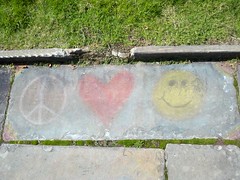
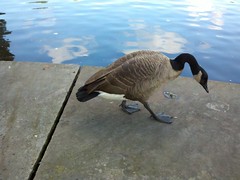
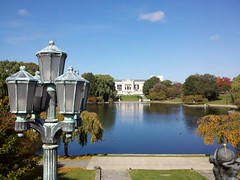
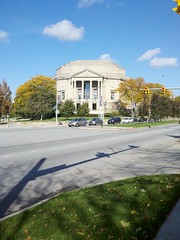









 Turning my head slightly another view of Horseshoe Lake... the water is so still that the trees from the opposite bank are perfectly reflected.
Turning my head slightly another view of Horseshoe Lake... the water is so still that the trees from the opposite bank are perfectly reflected.



 I think for this picture to work the way I want it to not only do I need a camera with manual focus, but I also need the ability to adjust the exposure. Near the center of this picture--in the background--is a bench. If you come at just the right time of day it's in a tiny little pool of light leaking down from the canopy above. Today I was not there at the right time, but today was also the first time I've seen anyone in that bench, which discouraged me from trying too many photos.
I think for this picture to work the way I want it to not only do I need a camera with manual focus, but I also need the ability to adjust the exposure. Near the center of this picture--in the background--is a bench. If you come at just the right time of day it's in a tiny little pool of light leaking down from the canopy above. Today I was not there at the right time, but today was also the first time I've seen anyone in that bench, which discouraged me from trying too many photos.  Looking West as the water leaves Lower Shaker Lake, it passes under a rarely used quaint stone footbridge. One of many things right in front of you that you don't see unless you pause and look.
Looking West as the water leaves Lower Shaker Lake, it passes under a rarely used quaint stone footbridge. One of many things right in front of you that you don't see unless you pause and look. 
 Lincoln
Lincoln



